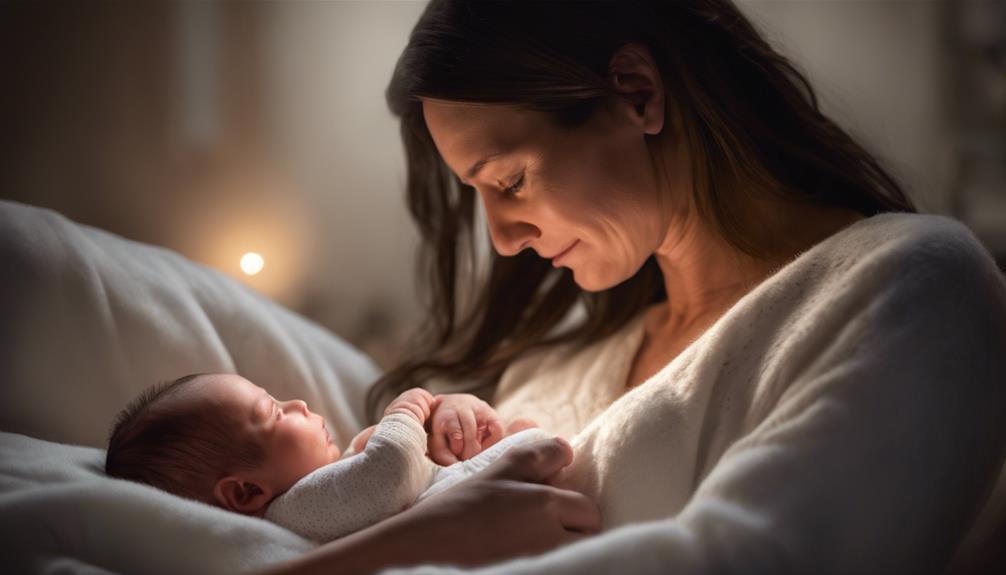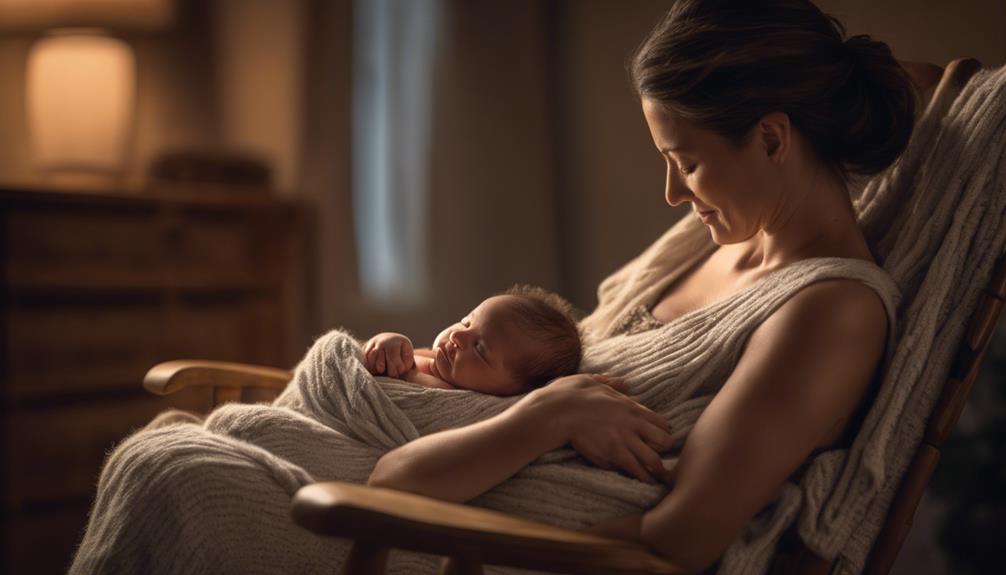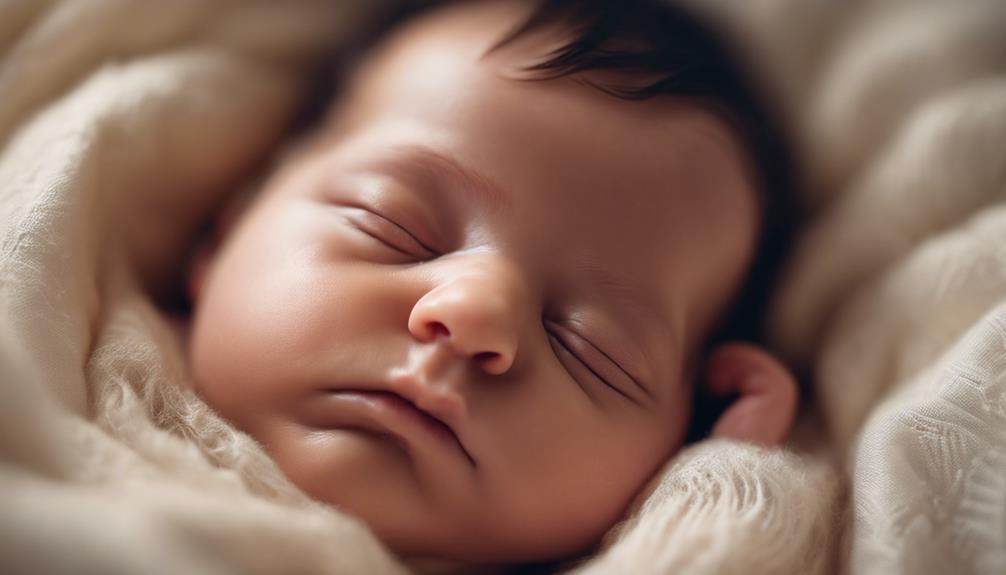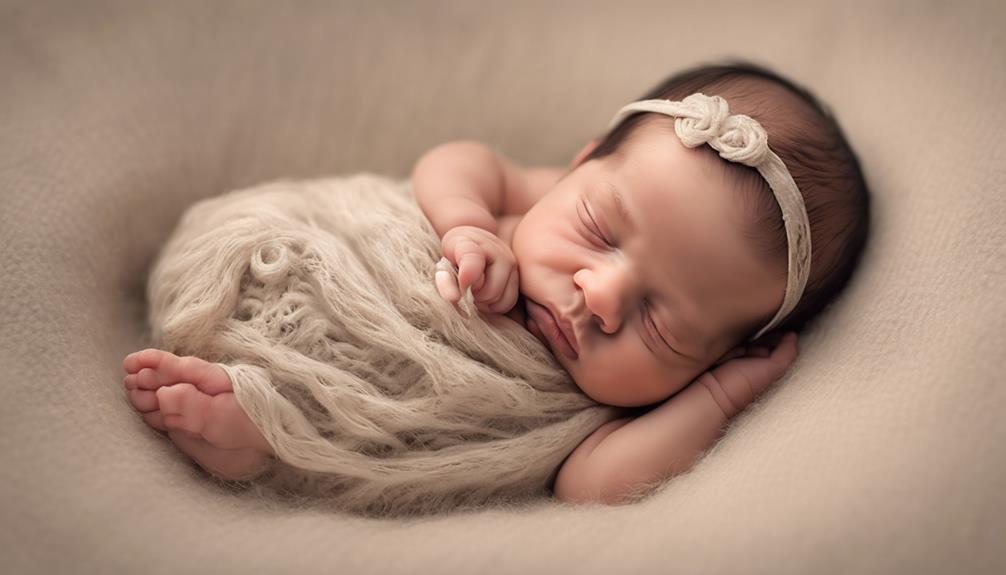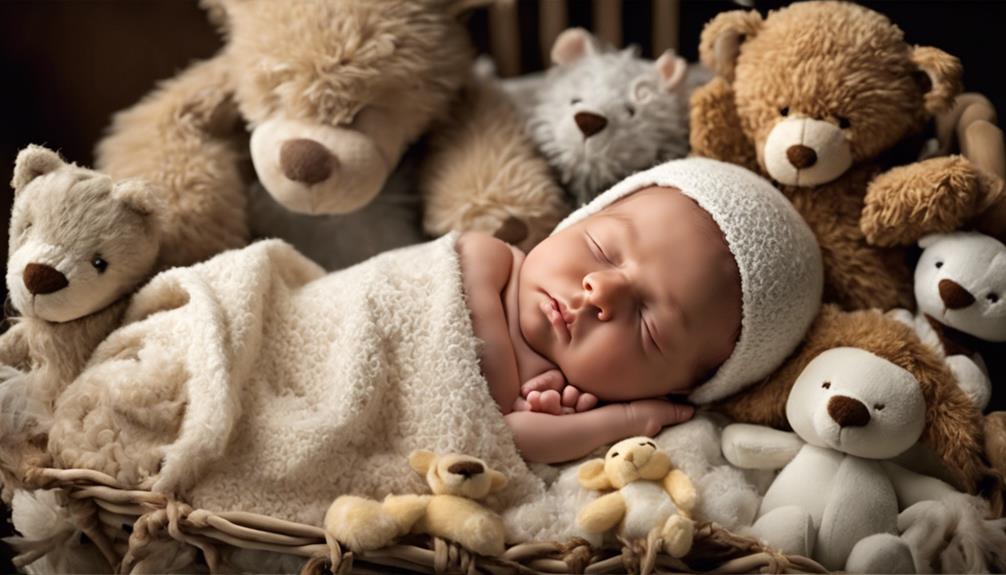As parents, we often liken helping our newborns sleep without solely relying on us to teaching them to ride a bike. Just like guiding them with training wheels before they pedal solo, we can gently ease our babies into peaceful slumber without constant holding.
But how do we strike this delicate balance between comfort and independence in the wee hours of the night? Let's explore practical strategies that promote restful nights for both your little one and yourself.
Key Takeaways
- Establish a consistent bedtime routine for your newborn to promote independent sleep
- Encourage self-soothing techniques like introducing a lovey or gentle rocking
- Transition your baby to independent sleep by gradually increasing distance during sleep
- Create a comfortable sleep environment with optimal conditions for restful nights
Establishing Healthy Sleep Habits
To help your newborn develop healthy sleep habits, we recommend starting with a consistent bedtime routine that signals it's time to rest. Establishing a predictable sleep environment is important for promoting good sleep patterns. Keep the room dark, cool, and quiet to create a soothing atmosphere conducive to rest. Encourage self-soothing by allowing your baby to drift off independently, fostering the development of essential self-soothing skills. Utilizing swaddles or sleep sacks can provide a sense of security, mimicking the cozy environment of the womb.
Monitoring your baby's sleep patterns is essential. By keeping track of their sleep behaviors, you can make necessary adjustments to promote healthy sleep habits. Remember, every baby is unique, so being attentive to their individual needs is key. Consistency is important in any sleep training method you choose to follow. By maintaining a steady routine and making gentle modifications when needed, you can help your newborn establish a solid foundation for healthy sleep habits.
Encouraging Self-Soothing Techniques

Implementing self-soothing techniques is a crucial aspect of helping your newborn develop healthy sleep habits. Introducing a lovey or comfort object can assist your baby in self-soothing during the night. Instead of holding your baby all night, try gentle rocking or patting to encourage self-soothing skills. Gradually increasing the distance between you and your baby as they fall asleep can foster independence. Allowing your baby to fuss for short periods before soothing them can help promote self-soothing behaviors. A consistent bedtime routine that signals it's time for sleep can aid in self-soothing during the night.
| Techniques | Benefits |
|---|---|
| Introduce a lovey | Helps baby self-soothe |
| Gentle rocking/patting | Promotes self-soothing skills |
| Foster independence | Gradually increase distance to encourage independence |
| Consistent bedtime routine | Signals sleep time aiding in self-soothing |
Transitioning to Independent Sleep

As we guide our newborn towards independent sleep, we gently introduce them to the crib while they're drowsy but awake, nurturing their self-soothing abilities from the start.
Shifting to independent sleep involves diversifying sleep environments and routines gradually. It's beneficial to adjust the sequence of bedtime events to help your baby associate the crib with sleep.
Providing gentle reassurance, like holding their hand or offering a comforting touch, can ease the switch to solo slumber. Celebrate small victories along the way as your newborn learns to sleep independently, building their confidence and sense of security.
Creating a Comfortable Sleep Environment

Creating a cozy and conducive sleep environment for your newborn involves maintaining a perfect room temperature between 68-72°F. White noise machines and blackout curtains can help create a soothing atmosphere, ideal for promoting deep sleep. Investing in a quality baby mattress and choosing breathable crib mattress materials like organic cotton sheets can enhance comfort and safety. Dimming the lights during bedtime contributes to a calming environment, signaling to your baby that it's time to rest. It's important to avoid having stimulating toys in the sleep space to prevent distractions that may disrupt your baby's sleep. Ensuring the crib mattress fits securely is critical to reduce any entrapment risks and provide a secure sleeping environment for your little one.
Here is a visual representation of ideas to create a comfortable sleep environment for your newborn:
| Aspect | Tips |
|---|---|
| Room Temperature | Maintain 68-72°F for the best sleep |
| Sound | Use white noise machines for a calming environment |
| Light | Dim lights during bedtime for a soothing atmosphere |
| Bedding | Opt for quality baby mattress and organic cotton sheets |
| Safety | Make sure crib mattress fits securely to prevent entrapment risks |
Implementing Consistent Bedtime Routines

To establish a consistent bedtime routine for your newborn, start by incorporating calming activities that signal it's time to sleep. Consistent bedtime routines are important for helping your baby understand when it's time to rest, which can lead to better sleep patterns.
By incorporating calming elements such as a warm bath, gentle massage, or soft music, you can help your baby relax and prepare for bedtime. Following the same sequence of events each night adds predictability to your baby's routine, promoting a sense of security and readiness for sleep.
This predictability can also reduce bedtime resistance and make the change to independent sleep smoother for both you and your baby. Research suggests that babies thrive on routine and predictability, making consistent bedtime rituals essential for quality sleep.
Embracing a nighttime routine filled with calming activities can create a peaceful environment that supports your newborn's sleep needs.
Conclusion
As parents, we comprehend the challenges of helping our newborns sleep without always being held. Did you know that 60% of newborns struggle to sleep without being held at night?
By following the tips and techniques outlined in this article, you can establish healthy sleep habits, encourage self-soothing, and create a comfortable sleep environment for your little one.
Remember to be patient and consistent as you help your baby learn to sleep independently. You've got this!
